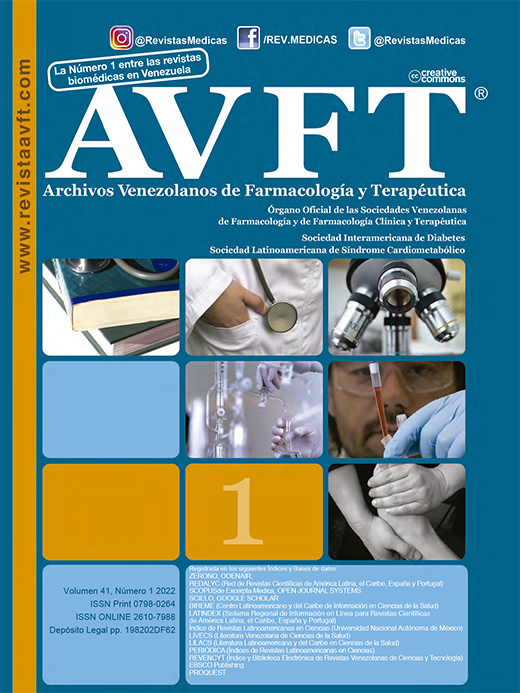Burnout syndrome in teachers of the faculty of medical sciences UNIANDES
Keywords:
Burnout; Teachers; Work Stress, JobAbstract
Introduction: Burnout Syndrome (BS) is a psychosocial problem that occurs when there is emotional exhaustion due to exposure to constant stressful situations. Therefore, the objective of this study was to determine the frequency of Burnout Syndrome and its relationship with sociodemographic factors in teachers of the Faculty of Medical Sciences of the Universidad Regional Autónoma de los Andes "UNIANDES". Methodology: A cross-sectional study was carried out in 86 intentionally selected teachers through a web survey, sociodemographic data and the Maslach Burnout Inventory were obtained to determine the presence of BS. Results: 54.7% (n=47) were women, the overall age was 44.8±4.0 years. 94.2% of the teachers evaluated showed a tendency to develop BS, while 5.8% had already developed the syndrome. The main factors associated with the presence of BS were sex (female: 8.5% vs. male: 2.6%; P=0.03), having problems with colleagues or superiors (no: 2.8% vs. yes: 20%; P=0.01) and job search to change the current one (no: 3.8% vs yes: 28.6%; P<0.01). Conclusions: Of the teachers of the Faculty of Medical Sciences of the Autonomous Regional University of the Andes "UNIANDES" only 5.8% presented BS and 92.4% showed a tendency to develop it. Therefore, it is essential to provide frequent psychological monitoring to all teaching staff, in relation to their psychic and emotional satisfaction in the workplace.
Downloads
References
Bianchi R, Schonfeld I, Laurent E. Burnout does not help predict depression among French school teachers. Scand J Work Environ Health. 2015;41(6):565-8.
Morales L, Hidalgo L. Síndrome de Burnout. Med. leg. Costa Rica. 2015;32(1): 119-124.
Fernández J, Pérez J, Peralta M. Influencia de factores sociodemográficos, laborales y de estilo de vida sobre los niveles de burnout en personal sanitario de cuidados paliativos. Anales Sis San Navarra. 2017;40(3): 421-431.
Rivera Á, Segura P, Giler G. Síndrome de Burnout en docentes de instituciones de educación superior. AVFT Archivos Venezolanos de Farmacología y Terapeútica. 2018;37(2):17-23.
Reyes F, Palomino C, Aponte N. Síndrome de desgaste profesional, índice de masa corporal y otros factores asociados con la labor de profesores de educación física de Ibagué, Colombia. Biomédica. 2019;39(1):537-546.
Ndongo M, Bika C, Moueleu P. Epidemiology of burnout syndrome in four occupational sectors in Cameroon-impact of the practice of physical activities and sport. Public Health. 2020;7(2):319-335.
García T, Vieiro P, Gómez M. Síndrome de burnout y alteraciones de la voz en un grupo de docentes. International Journal of Developmental and Educational Psychology. 2010;1(1):641-649.
Maslach C, Jackson SE, Leiter MP. Maslach Burnout Inventory. Palo Alto, CA: Consulting Psychologists Press; 1996.
Ibarra M, Erazo P, Gallego F. Síndrome de burnout en profesionales de una instirución de educación superior de Manizales-Colombia. Revista de Investigaciones UCM. 2018; 32(1): 69-83.
Ugalde J, Moleastina C. Burnout en docentes de la Facultad de Ingeniería Industrial de la Universidad de Guayaquil-Ecuador. Revista Espacios. 2018;39(52): 26-31.
Bustamante E, Bustamante F, González G, Bustamante L. El burnout en la profesión docente: un estudio en la escuela de bioanálisis de la Universidad de Carabobo Sede Aragua, Venezuela. Medicina y Seguridad del trabajo. 2016; 62(243): 111-121.
Molero M, Pérez M, Atria L, Oropesa N, Gázquez J. Burnout, Perceived Efficacy, and Job Satisfaction: Perception of the Educational Context in High School Teachers. Biomed Res Int. 2019;2019:1021408.
Mojsa J, Golonka K, Marek T. Job burnout and engagement among teachers - Worklife areas and personality traits as predictors of relationships with work. Int J Occup Med Environ Health. 2015;28(1):102-19.
Ptáček R, Vnukova M, Raboch J, Smetackova I, Sanders E, Svandova L, et al. Burnout Syndrome and Lifestyle Among Primary School Teachers: A Czech Representative Study. Medicine Science Monitor. 2019; 25(1): 4974-4981.
Vukojevič M, Antunovič A, Petrov B. Difference in the prevalence of burnout syndrome in preclinical and clinical teaching doctors of Mostar school of medicine. Lijec Vjesn. 2015;137(5-6):150-5.
Downloads
Published
How to Cite
Issue
Section
License
Copyright (c) 2023 AVFT – Archivos Venezolanos de Farmacología y Terapéutica

This work is licensed under a Creative Commons Attribution-NonCommercial-NoDerivatives 4.0 International License.




